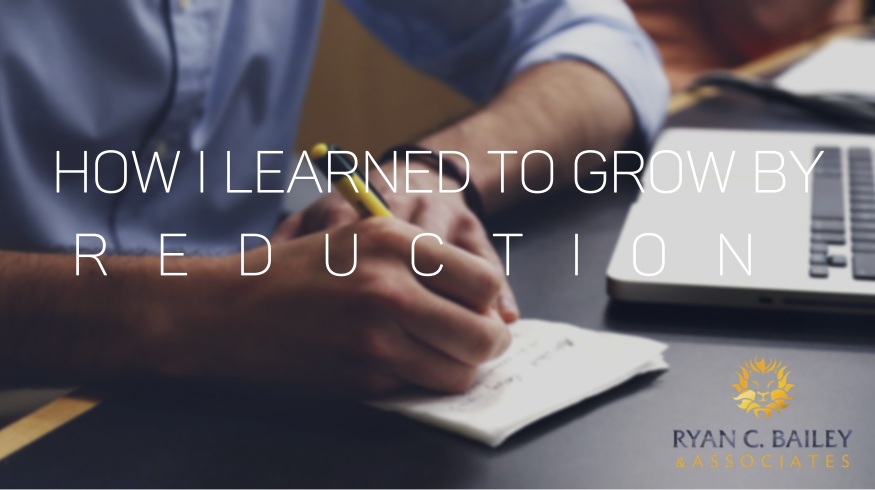 When I first started off in counseling, I focused on just one thing: helping male porn addicts get real distance from their addiction. I expected to focus on that for the rest of my career.
As I began to work with male porn addicts, I realized a lot of them had wives, and those wives were really hurting. So the guys would ask me to meet with them.
When I first started off in counseling, I focused on just one thing: helping male porn addicts get real distance from their addiction. I expected to focus on that for the rest of my career.
As I began to work with male porn addicts, I realized a lot of them had wives, and those wives were really hurting. So the guys would ask me to meet with them.
I eagerly said Yes.
I then spent time researching how to help the spouse of a porn addict.
I also had to learn how to do marriage counseling.
A friend of mine who was a marriage counselor gave me great tips and strategies for marriage counseling, and I dove right in.
As I continued to work with porn addicts and their wives, they began to share how their kids were being impacted by dad’s addiction.
They asked if I could see their kids.
So I eagerly said Yes.
Then I ran off and studied how to work with kids. I hired a mentor who could give me key pointers on facilitating family counseling.
I then began to work with families who were not dealing with a porn addiction. So I added family counseling to my list of services.
This went on until eventually I was seeing clients:
- Who were depressed
- Who wanted to discover what they are called to do, and how they are designed to do it
- Who were suicidal
- Who were traumatized
- Who were abused
- Whose loved ones had died
- Who were addicted to a drug or to alcohol
- Who struggled with anxiety
- Etc., etc., etc.
Then, my wife discovered an article on coaching and when she finished, she exclaimed, “Ryan read this!.... This is so you!.... You gotta read this!” I was dismissive of the idea of coaching. However, after pooh-poohing it for awhile, I eventually read the article.
As usual, my wife was right.
So I called former counseling clients who were ideal for coaching, and many signed up.
In time, I saw the same progression in coaching as I had seen in counseling. I expanded into life coaching, career coaching, couples coaching, executive coaching, business coaching, coaching on writing business plans, and more.
On the advice of a mentor, I created different sites to emphasize these different disciplines. I also had multiple email addresses.
Soon, however, this became counter-productive. I found myself getting mixed up, sending clients in one market a message intended for another market. Understandably, this created some brand confusion.
When it became popular to Google someone’s name before choosing to work with them, clients could see all of the different sites under my name, and brand confusion increased.
I wish I could say that I was consistently hitting home runs in all of these areas. Sadly, however, some were only base hits, and still others were misses.
I wanted to do my best to help them, so I undertook a lot of research, hired experts, and began a trial and error process. I was putting so much effort in so many different directions that my head was starting to spin. I did not know what to study next.
In essence, I was not running my practice. My practice was running me.
The Price of Doing Everything
This took a toll on me emotionally. On a typical day, I went from grief counseling in the first session, to brainstorming on a major initiative with a division leader of a Fortune 500 company, to helping a small business owner learn how to use Google Calendar in the third, to confronting lies that an addict client was trying to sell me in the fourth, and then talking a client down from suicide in the fifth.
My hours got longer.
Yes, my practice was doing well financially, but the personal cost was great.
I gained a lot of weight, saw my wife and kids less, saw my friends even less (increased isolation is not a good thing for an ENFJ).
Then my coach gave me the book Essentialism by McKeown. This book teaches that we all need to discover our essential intent, and then we need to put all of our energy into that essential intent. This leads to much higher productivity, true meaningful success, and fun, all while reducing the amount of decisions you have to make (aka stress).
So what is an essential intent? “An essential intent, on the other hand, is both inspirational and concrete, both meaningful and measurable. Done right, an essential intent is one decision that settles one thousand later decisions. It’s like deciding you’re going to become a doctor instead of a lawyer. One strategic choice eliminates a universe of other options and maps a course for the next five, ten, or even twenty years of your life. Once the big decision is made, all subsequent decisions come into better focus (Essentialism).”
Discovering my Essential Intent
When I looked at all I did, and I looked at the themes that made the home runs the home runs, I realized what they all had in common: I was using my gift for getting to the heart. That is, I was able to help my clients get to the beliefs that fueled their issues. Once the beliefs were nailed, we developed strategies and plans around those beliefs. Coaching and counseling clients found true lasting change. They experienced meaningful success with far fewer burdens than they had before.
To make sure that “getting to the heart” was truly my essential intent, I emailed clients who had experienced home runs through the work we did together, and I asked them, “What is the one thing I do that has been most helpful to you?” The overwhelming response could be summarized as “getting to the heart." That was great confirmation.
Now that I know my essential intent is “getting to the heart,” my stress levels have come down tremendously.
I have learned graciously to say No to anything that bypasses first getting to the heart --usually by offering the name of someone who could help better than I can.
I have organized all that I do around the theme of getting to the heart, which also means that I am improving that skill. I am developing a natural strength, and I can’t begin to tell you how cool it is to do what I do best, even better.
I am working fewer hours, accomplishing meaningful goals, making more profit, and beginning to feel like I am finally living.
My coaching clients (and counseling clients, for that matter) are reaching their goals faster than they used to. They are executing better, in part because we are nailing the root better.
The same thing has happened with the speaking gigs. When a client says they want to do a workshop on “team building,” I ask better questions, questions that help them get to the heart of what they mean when they say “team building.” Then I design the workshop around the deepest part of their heart’s desired outcome.
This has led to creating workshops that sizzle now more than they ever have.
I teach my clients the concepts from McKeown's book, Essentialism, and watch them finally attain the work/life balance they’ve wanted. I’ve seen them achieve incredible goals, such as doubling the size of a Fortune 500 division in under four years, and achieving four significant promotions in four years. Many are reporting to me that their teams are succeeding much better, and with fewer burdens.
How about you?
What is your essential intent? Here are some questions that might help you discover it:
- Look at the greatest successes you’ve had. What did they have in common? What did you do in each of those successes that was similar?
- What do you naturally do better than others? How about across time? What things have you naturally done better across your life?
- Ask stakeholders, clients, vendors, peers, and others with whom you’ve had home runs: “What is the one thing I do that has been most helpful to you?”
Chew On This:
- What would life be like if you were living in your strike zone 80% of the time?
Ryan C. Bailey is an Executive Coach who helps business leaders develop in-demand high performing teams.
*This blog is an amalgamation of a few different clients. No one single client is being singled out.

